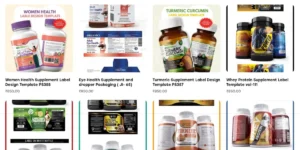Rotogravure vs Flexo Printing : When it comes to mass packaging production — especially for flexible materials like pouches, wraps, and labels — two heavyweight printing technologies dominate: Rotogravure and Flexographic (Flexo) printing.
Both offer high-speed, high-volume capabilities, but they differ significantly in print quality, cost structure, material compatibility, and overall ROI.
In this guide, we’ll break down the technical and commercial comparison of Rotogravure vs Flexo, so you can make an informed decision for your brand’s packaging strategy.
🧠 What Are These Technologies?
🟫 Rotogravure Printing
An intaglio printing process where the image is etched onto a metal cylinder. Ink fills these recessed cells and is transferred directly to the substrate.
- Ideal for ultra-high-volume, photorealistic printing
- Requires chromed cylinders, which are expensive but reusable
🟧 Flexographic Printing
A relief printing method where ink is applied from flexible plates to the packaging material via rollers.
- Suited for moderate to high-volume jobs
- Uses photopolymer plates, cheaper and faster to produce
🧾 Technical Comparison Chart
| Feature | Rotogravure | Flexographic |
| Print Quality | Superior for high-resolution, image-rich designs | Good quality for most packaging applications |
| Speed | Very high (up to 600–800 m/min) | High (up to 600 m/min) |
| Setup Cost | Very high (metal cylinders) | Moderate (flexo plates) |
| Per Unit Cost (High Volume) | Very low after setup | Competitive at medium-high volumes |
| Color Consistency | Excellent for long runs | Very good, improving with new tech |
| Best Materials | PET, BOPP, PVC, foil, paper | Paper, film, kraft, corrugated, labels |
| Turnaround Time | Longer (cylinder engraving takes time) | Faster (plate making is quicker) |
| Eco-Friendliness | Less due to solvent inks and waste | More, especially with water-based inks |
| Durability of Plates | Cylinders last millions of impressions | Plates wear faster, need more frequent replacement |
💰 Commercial Perspective: When to Choose Which
✅ Choose Rotogravure if:
- You print very high volumes (typically 500,000+ units per SKU)
- Your design has fine gradients, photo-quality images, or metallic effects
- You want maximum color precision across millions of impressions
- You export to markets that demand luxury, premium finish packaging
Examples:
Snacks, instant noodles, dairy products, tea/coffee pouches by national-level FMCG brands.
✅ Choose Flexographic if:
- You’re producing mid to high volumes (starting from 10,000+ units)
- Your packaging uses flat colors, line art, simple branding
- You want faster turnaround or frequent design changes
- You prioritize eco-friendly printing or work with paper-based materials
Examples:
Organic food pouches, juice labels, corrugated boxes, FMCG exports, seasonal SKUs.
🧪 Real Industry Use Cases
| Brand/Product | Printing Method | Why? |
| Lay’s Chips (India) | Rotogravure | Complex image-heavy designs in huge volumes |
| Local granola pouch (startup) | Flexographic | Faster setup, budget-friendly for medium runs |
| Detergent refill packs | Rotogravure | Long-term consistency, premium color reproduction |
| Paper-based spice packs | Flexographic | Eco-friendly, economical for regional distribution |
🔁 Hybrid Model Trend (2025)
Larger companies are now:
- Using Flexo for regional SKUs or seasonal editions
- Using Rotogravure for flagship products and national distribution
This hybrid approach balances cost, quality, and flexibility.
📌 Final Thoughts
| You Should Use… | If You Need… |
| Rotogravure | Ultimate print precision, massive volumes, image-dominant design |
| Flexographic | Moderate-to-high runs, faster turnarounds, versatile materials, sustainability |
Both technologies are excellent — the right choice depends on your business stage, product type, and design goals.
At PackagingSeller.com, we deliver designs fully compatible with Flexo and Rotogravure requirements, including:
- Proper color separations
- Print-ready dielines
- Compliance with print tolerances
- Pantone and CMYK adaptations







